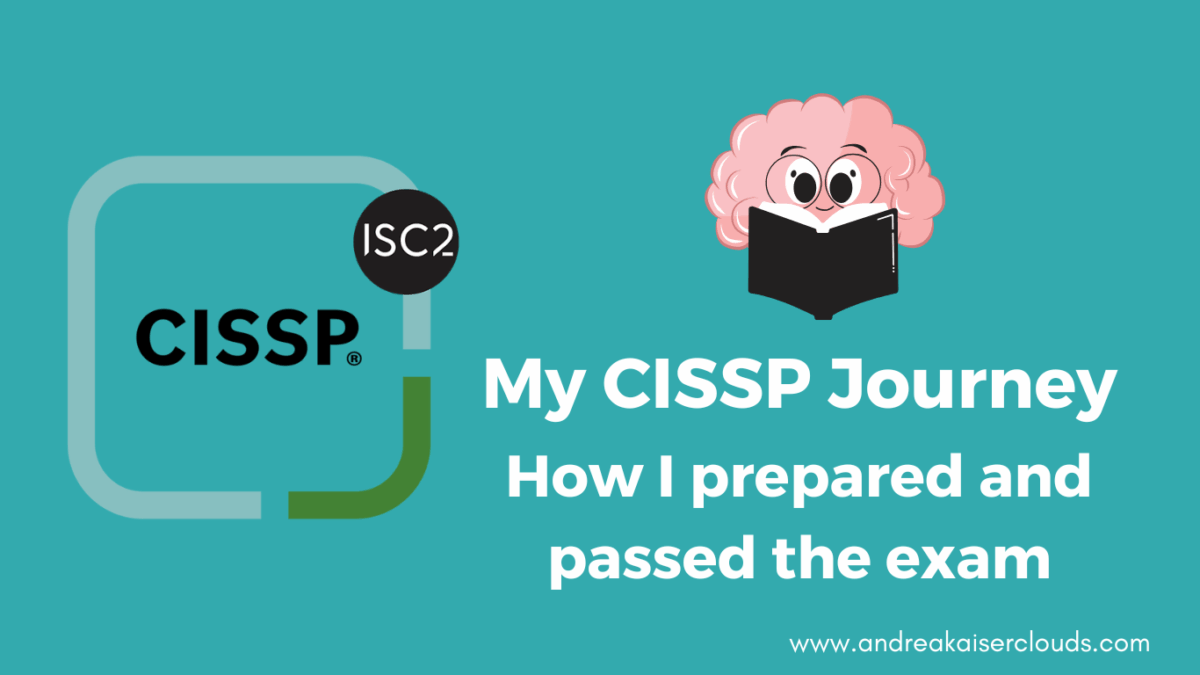My CISSP Journey: How I Prepared and Passed the Exam

When I decided to prepare for the CISSP certification, I didn’t know what I was getting myself into.I’d heard stories about people studying for months or even years, spending thousands of dollars on courses and books, and sharing the famous “you’ll never feel ready” warning.
But I also knew it was a step I wanted to take — to deepen my understanding of cybersecurity, validate the experience I’d built over the years, and prove to myself that I had truly come back after my career pause.
I saw the CISSP as a way to connect the dots between my background in networking and IT consulting and my new responsibilities as a principal engineer in the financial sector.
Getting Started
When I first looked at the ISC² outline, I felt overwhelmed. Even though I had strong experience with Network Security, Security Architecture, and Identity Management, other domains like Risk Management and Software Development Security were new to me.
I started small, reading the ISC² Body of Knowledge early in the mornings (before my kids woke up). But soon I stopped. The material felt dry, and things weren’t clicking as I expected.
A couple of months later, I registered for a self-paced online class with StormWinds, and little by little, I started enjoying learning new concepts and refreshing old ones. I began to see how everything connected — from cryptography to policy frameworks — all sharing a common goal: protecting people and information.
Still, the idea of taking the exam felt far away.
Committing to a Plan
After finishing the online class, I talked to my manager about getting certified “sometime down the road.”
He encouraged me to do it sooner rather than later — and even offered to cover the exam fee.
It took me a couple of days to commit, but once I did, I purchased the package that included two exam attempts (just in case!) and gave myself two months to prepare.
My goal was to pass the exam on the first attempt — without spending thousands of dollars or sacrificing family time.
Once the date was set, I built a study plan to cover all eight domains and practice questions for eight weeks (minus one vacation week).
During that time, I studied from 4 a.m. to 6 a.m. and again from 8 p.m. to 10 p.m., right before my kids woke up and after they went to bed.
During the day, I listened to a CISSP preparation podcast while getting ready for work, commuting, cooking, or taking lunch and walk breaks.
When I felt ready, I turned to ISC² practice questions and the official study app. If I found a few spare minutes, I’d open the app and squeeze in extra practice time.
The Resources I Used

Books
- ISC² Body of Knowledge
- ISC² CISSP Official Study Guide (includes 1000 online practice questions)
- Think Like a Manager by Luke Ahmed
Online Videos
- Pete Zerger’s CISSP Exam Cram YouTube playlist
- Pete Zerger’s How to think like a Manager for the CISSP Exam video
- Luke Ahmed’s Study Notes and Theory practice questions
Podcasts & Apps
- Shon Gerber’s CISSP Cyber Training Podcast
- LearnZapp CISSP ISC² Official App (Free plan and subscription plans available)
- Wiley Exam Learning – Sybex (ISC² Official Study Guide App)
The Struggle
There were moments when I wanted to give up.
Balancing work, family, and study time wasn’t easy. The amount of material to cover with so little time felt like a marathon.
When that happened, I learned to step back and breathe. I reminded myself why I started — to grow, to challenge myself, and to build something lasting.
Slowly, the frustration turned into progress.
If you ever find yourself stuck and exhausted, don’t quit. Adjust. The journey is supposed to stretch you.
Exam Day
As exam day got closer, I focused on practice questions and mindset.
The morning of the exam, I drove two hours to the test center, listening to Shon Gerber’s podcast for an extra dose of practice and motivation.
Walking into the testing center, I felt nervous but strangely calm — I had followed my plan and done my best.
The exam was intense. Every question pushed me to think critically and apply judgment rather than recall definitions. The adaptive format made it impossible to tell how I was doing.
Two and a half hours later, the screen stopped at question 101. I clicked Submit and held my breath.
When the results appeared, I smiled, exhaled, and teared up.
It wasn’t just relief — it was a deep sense of accomplishment. Every early morning, every late night, every small decision to keep going had led to that moment.
Outside, my family was waiting to celebrate with ice cream.

What I Learned Beyond the Certification
Passing the CISSP taught me far more than the eight domains.
It taught me discipline — showing up even when I didn’t feel like it.
It taught me resilience — learning from setbacks instead of giving up.
And it reminded me that growth lives on the other side of comfort.
Since passing, I’ve found myself approaching security differently — more strategically, and with more empathy. The CISSP gave me structure, but the journey gave me confidence.
My Advice for Future CISSP Candidates
If you’re preparing for the CISSP, here’s what I’d share with you:
- Don’t memorize — understand. The exam rewards comprehension, not recall.
- Think like a manager. It’s not just about technology; it’s about risk, people, and business.
- Stay consistent — even 30 minutes a day adds up.
- Find your own rhythm. There’s no one-size-fits-all approach.
- Take care of yourself — rest is part of preparation.
- You don’t have to be perfect. You just have to keep going.
Final Thoughts

Earning the CISSP was one of the hardest — and most rewarding — experiences of my career.
It marked a new chapter in how I see myself as a professional and a lifelong learner.
If you’re on your own CISSP journey, keep pushing forward. You’re learning much more than what’s in the exam outline — you’re building the mindset of a security leader.
And if my story helps even one person feel a little less intimidated, then every early morning and late-night study session was worth it.
Follow on LinkedInHave questions about my CISSP prep or want to share your own experience? I’d love to connect and exchange stories — especially with anyone just starting out.
